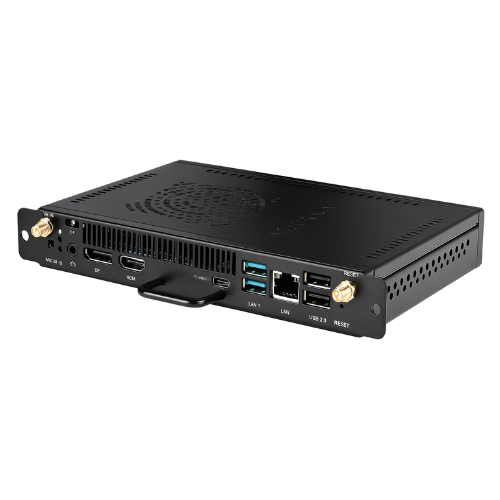Discover the key differences between professional displays and consumer TVs for digital signage. Learn why commercial-grade screens offer better performance, durability, and ROI.
Why Choosing the Right Display Matters for Digital Signage
When planning a digital signage project, one of the most important decisions is choosing the right screen. Should you go with a consumer TV or invest in a professional display?
While both offer similar visual performance, professional displays are purpose-built for 24/7 operation, superior control, and long-term reliability—unlike consumer TVs, which are designed for occasional use at home.
Main Differences Between Pro Displays and Consumer TVs
1. Built for Continuous Use
Professional displays are engineered to run 24/7, with internal cooling systems and thermal protection. Consumer TVs are only meant for a few hours per day, making them less reliable in commercial settings.
2. Tamper-Proof and Secure
In public spaces, digital signage displays must be protected. Commercial monitors offer lockable controls, preventing unwanted tampering with power, volume, or input sources—something regular TVs don’t offer.
3. Optimized for Portrait & Landscape Mounting
Need a vertical display? Consumer TVs are not designed for portrait orientation, which can cause overheating and image degradation (like Gravity Mura). Professional screens support both orientations with better heat management and longer lifespan.
Why Professional Displays Offer Better ROI
4. Extended Warranties and Commercial Support
Consumer TVs often come with a limited 1-year warranty, sometimes void if used in a commercial setting. Pro displays offer up to 3 years of warranty with full support.
5. Better Image Retention and Anti-Burn-In Features
Professional screens use higher-quality materials that reduce image retention and “Yogore” stains, preserving clarity even during extended use.
6. Designed for Tough Environments
From fast-food chains to outdoor transportation hubs, commercial displays are built for demanding environments. Options like fanless designs and IP66 protection make them ideal for exposure to dust, moisture, and extreme temperatures.
Advanced Capabilities for Business and Retail
7. Scalable Control and Integration
Professional displays feature RS232 and LAN control, making it easy to manage multiple displays remotely. Consumer TVs lack this feature, making them inefficient for larger networks.
8. Slot2.0 Architecture for Expansion
Need more computing power? Many pro displays offer Slot2.0—supporting plug-in PCs, advanced input cards, and software integration without removing the screen.
9. Wider Viewing Angles with IPS Panels
With IPS panel technology, commercial displays deliver true colors and better image quality, even from side angles—perfect for high-traffic spaces.
Special Features You Won’t Find in a Home TV
10. Integrated Rear Speakers
Commercial monitors offer a sleek, bezel-friendly design with rear-facing speakers, perfect for video wall installations.
11. Touchscreen Capabilities
Unlike standard TVs, professional displays can include touchscreens—ideal for interactive kiosks, hospital wayfinding, or quick-service restaurants (QSR).
Conclusion: Is a Professional Display Worth It?
If you’re running a digital signage system, a professional-grade display offers unmatched durability, control, and performance. While a consumer TV might seem cost-effective at first, a commercial screen is the smarter long-term investment.
Whether you’re outfitting a retail store, restaurant, transport hub, or corporate space—ExpressDisplay offers a wide range of commercial display solutions tailored to your business needs.
Discover the Right Display Solution for Your Business

At ExpressDisplay, we offer a full range of professional display solutions tailored to your industry and needs.







Add comment
Vous devez vous connecter pour publier un commentaire.